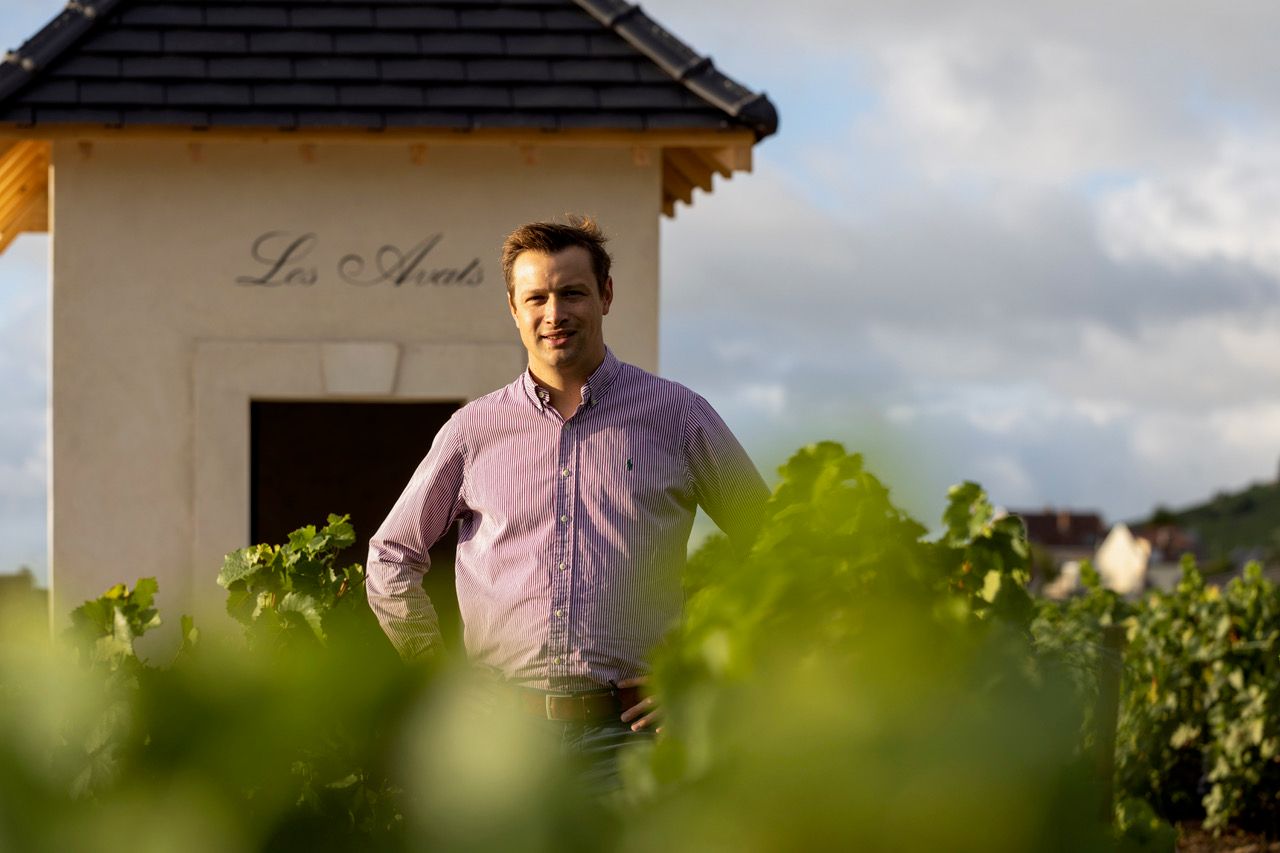“2013 was a year marked by the historically typical weather for the Champagne harvest, with cold hands, wet feet, and the need to warm up around a fire at the end of each row,” says Champagne Barons de Rothschild chef de caves Guilaume Lété.
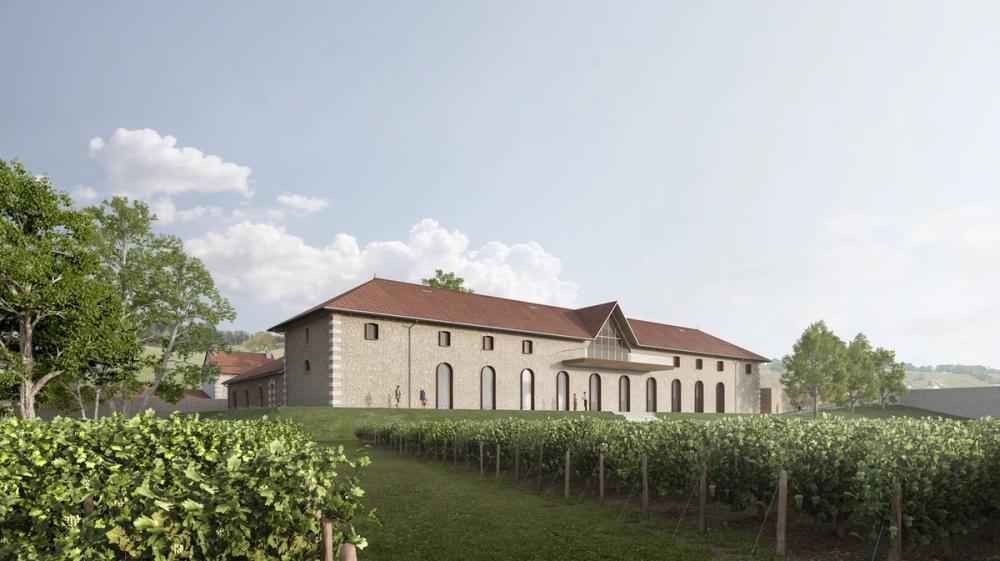
The new Champagne Barons de Rothschild winery will be open in 2024
There are lots of exciting new projects in the works for the Rothschild family, not only at Château Mouton Rothschild or at Château Lafite Rothschild in Bordeaux, or at Opus One in the Napa Valley, or at Viña Almaviva in Chile’s Maipo Valley – but in Champagne.
Created in 2005, Champagne Barons de Rothschild is a relatively new house in Champagne. It has been unique since its inception, most importantly because it is the first time in history that the three branches of the members of the Rothschild family have joined forces to create a common estate. The three lines of the famous winemaking Rothschild family are today represented by Baron Philippe Sereys de Rothschild (Château Mouton Rothschild), Baron Benjamin and his wife Ariane (Château Clarke – Edmond de Rothschild Group), and Baron Eric and his daughter Saskia (Château Lafite Rothschild).
According to Philippe Sereys de Rothschild: “We decided that we wanted to do something together. Champagne was the natural choice. And rather than buying an existing house, we decided to create our own house instead.”
Launching two new cuvées
Just last week in Paris, Philippe Sereys de Rothschild was joined by Frédéric Mairesse, general director of Champagne Barons de Rothschild, their chef de caves Guillaume Lété, and markeing manager Marie Dumas for a special luncheon at Il Carpaccio, the Michelin-starred restaurant at Le Royal Monceau, featuring the dynamic duo of Oliver Piras and Alessandra Del Favero in the kitchen and Gabriele Del Carlo, who was named Italy’s Best Sommelier in 2011 and again in 2017, looking after the wines and wine service.
The occasion was to celebrate the release of two new prestige cuvées, Rare Collection Blanc de Blancs Vintage 2013 (100% Chardonnay from Avize, Cramant, Oger, and Le Mesnil-sur-Oger; 9600 bottles and 1200 magnums produced; suggested retail price per 750ml bottle: 310€) and Rare Collection Rosé Vintage 2013 (a blend of 92% Chardonnay from Avize, Cramant, Oger, and Le Mesnil-sur-Oger with 8% of Pinot Noir coming from Vernezay and Vertus; 2450 bottles and 290 magnums produced; suggested retail price per 750ml bottle: 390€), and to announce two very significant investments by Barons de Rothschild taking place in the heart of Champagne’s Côte des Blancs: a magnificent renovation of a manor house (built in 1870) that is being transformed into a modern winery (which will be ready for the 2024 harvest) while preserving its 19th century vaulted cellars and a luxurious reception space for private customers only (opening in 2025) in the Premier Cru village of Vertus, and a modern production facility in the nearby Grand Cru village of Oger set to be ready for action in 2024.
Although the corporate headquarters of Barons de Rothschild has been located at 2 rue Camille Lenoir in Reims (mere steps from La Résidence Eisenhower, Louis Roederer and Krug) since 2005, it makes sense that the family decided to invest so heavily in the Côte des Blancs since 70% of the grapes used to create the wines of Champagne Barons de Rothschild are crafted from the celebrated Chardonnay grapes located there. In addition to these two new sites, Barons de Rothschild will continue to maintain the building in Reims as its corporate headquarters.
About these ambitious projects, Philippe Sereys de Rothschild said: “We are very proud of the progress we have made since the creation of Barons de Rothschild in 2005. Today, we are looking more than ever towards the future. These investments continue to support the strong commitment of the three branches of our family to serve the vision of excellence that we share for our Grands Vins de Champagne.”
For me, the greatest pleasure of this particular luncheon in Paris was the chance to interview chef de caves Guillaume Lété. While the Rothschilds might be more famous in other parts of the world, Lété was himself born in Champagne, more specifically in the Grand Cru village of Avize on the Côte des Blancs. He joined Barons de Rothschild in 2011 at the age of only 23 years old and was appointed chef de caves in 2016. Today, he is one of the youngest and most dynamic winemakers in Champagne.
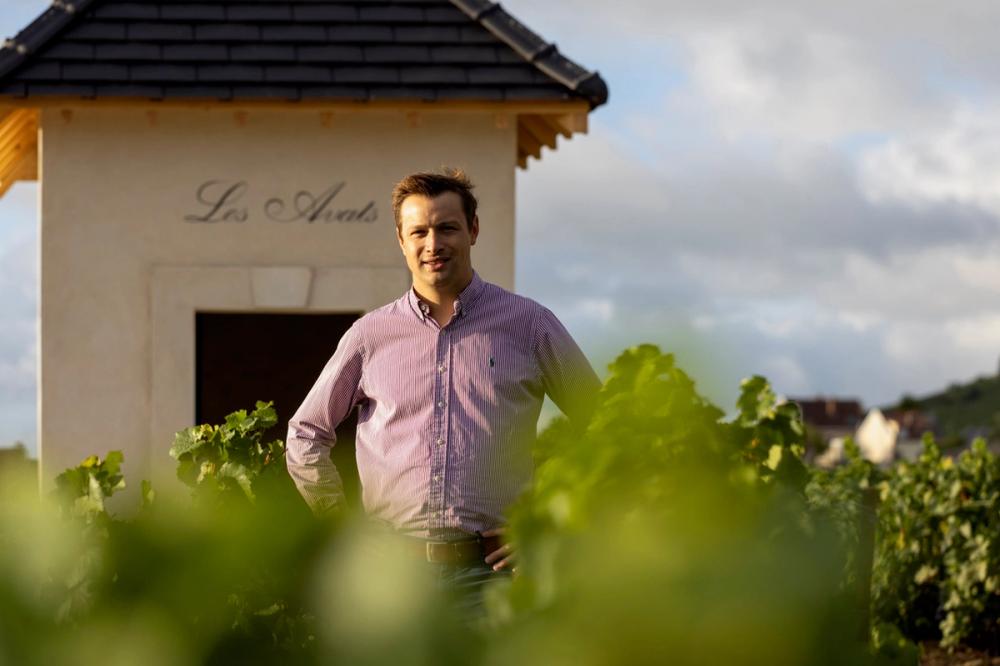
Champagne Barons de Rothschild chef de caves Guillaume Lété
Christian Holthausen: How do you think the Barons de Rothschild project was viewed by the rest of the Champagne appellation back in 2005 and how has that perception evolved in the last nearly 20 years?
Guillaume Lété: Initially, the Rothschild family was quite discreet. Prior to 2005, they met with families from renowned houses and growers alike to learn about the specificities of Champagne and gradually ask for advice about the creation of a new independent house that would bear their name. Their efforts were globally well-received thanks to their humility. The aura of quality conveyed by the Rothschild name and the perspective of a new “Grand Vin de Champagne” were perceived as positive for the valorisation of the appellation. If there were any natural suspicions at first, I have personally seen the faith of our neighbours in the project increase year after year.
While we currently own some excellent vineyards ourselves (Barons de Rothschild owns 8 hectares in Cramant, Le Mesnil-sur-Oger, Avize, Oger, Ambonnay and Vertus, comprising 36 individual parcels in total), we are also working with approximately 20 families of growers who are proud to work with the family. Almost 20 years later, I think everyone in Champagne has come to realise that the initial project was very serious, and that Barons de Rothschild has been producing exceptional wines from the start.
Do you think that being known as some of the world’s most illustrious producers of wines from Bordeaux (and pioneers in both Napa and Chile) helped the Rothschild family to be able to innovate and adapt quicker than some of their traditional neighbours in Champagne because they were outsiders?
We are really combining the best of both worlds. On one hand, we are driven by a multi-generational family who has a great respect for tradition and secular know-how. This is why they really wanted to learn about the Champagne region and world before producing wine there. The family places trust in the growers and trust in the internal team to craft the best Grands Vins de Champagne possible. But on the other hand, you’re right! The Rothschild family also has an inherent pioneering and entrepreneurial spirit and the desire to create something from their own original perspective.
When the Rothschild family engages with a specific region, they learn about it in detail, they surround themselves with people who have the experience and know-how. The family knows what the expectations for “Grands Vins” are around the world. They need to understand what makes a place function – but then they are not afraid to innovate, experiment, and sometimes make things differently. When a family creates a new house from scratch, and your only remit is to make the very best Grand Vin possible, this is literally the dream job for a chef de caves!
An amusing nod to this crossroads between tradition and innovation might be illustrated by the notion that we have our own special bottle with embossed family arrows and the name of the house engraved on the bottom – but the family insisted on keeping the traditional champenoise bottle, because this shape was specially created for the wines of Champagne. We take the best of the traditional Champagne know-how and then create our own interpretation of it by pushing all the boundaries to craft a modern Grand Vin de Champagne of outstanding quality.
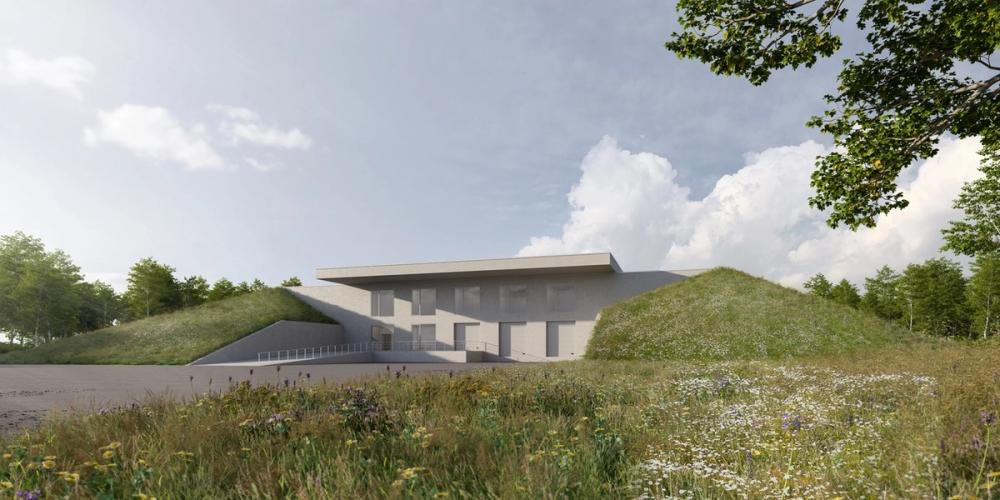
All aspects of the Champagne Barons de Rothschild winery design are being overseen by Lété
How involved have you been as the chief winemaker in the design and construction of the new winery? What technical elements are you most excited to be able to incorporate into this space?
We are very excited and looking forward to finishing this new winery. We are not disclosing the exact amount of investment, but I assured you that the family has paid attention to every single detail. Nothing was left unchallenged to see if we could do better on every level. The projects were approved (and improved) at every step by the three branches of the family themselves and an internal team composed of several team members including Frédéric Mairesse and myself. Once the architect (Giovanni Pace, accompanied by the engineering firm of Cical) was unanimously chosen, the family really let us take the lead to recommend the best elements we needed to make the very best wines. But they also challenged us regularly to see if we could push ourselves even further to be more precise and even better, just as they do with their teams in Bordeaux and throughout the world.
I personally oversee supervising the construction with the architect and the engineering company daily. I am also leading the design project and making recommendations on everything from vats to barrels to presses. The result should be a state-of-the art winery filled with all the modern technology we need to help bring as much precision to our wines as possible. I’m particularly excited about being able to vinify our still wines in a larger spectrum of various containers made from different materials.
You made Rare Collection Blanc de Blancs 2013 and Rare Collection Rosé 2013 with your own hands even before you became chef de caves. What do you remember about 2013 as a winemaker as a viticultural year? What is your definition of the 2013 vintage for Barons de Rothschild? How does it feel to release these two wines a decade later?
I remember that the year was quite complicated to manage. I recall the foggy cold October harvest, one that was like those I knew as a young boy playing in my grandparents’ vineyards. 2013 was a year marked by the historically typical weather for the Champagne harvest, with cold hands, wet feet, and the need to warm up around a fire at the end of each row.
For our own releases from 2013, we are happy to see how the Rare Collection style meshes beautifully with the vintage. In the Blanc de Blancs, we were looking for freshness, minerality as well as depth and complexity. In the end, the wine is bewitching. For the Rosé, the high proportion of Chardonnay gives minerality, but the touch of Pinot Noir made as its own red wine gives brightness of fruit and persistence in the mouth.
We are very proud to release these bottles, especially as 2013 was a complicated year. But we were confident we could make something magical – and 10 years later, we are pleased to see that these wines have even surpassed our expectations.
The Rothschild are famous for their majestic still wines. Are you interested in making a Coteaux Champenois yourself?
I am always interested in exploring and experimenting with new things and of course, the idea of a still wine from the Rothschild family in Champagne is something that has already been considered. But making a still red wine from Champagne is challenging – and we cannot produce anything less than an exceptional wine if it is going to bear the Rothschild name.
Today we are already crafting our own red wine, but it is only used to create our rosé champagne.
But never say never…
What do you think are the most important successes of Barons de Rothschild and what do you think are the most important challenges for the future of the house and for the future of the Champagne appellation?
We are proud to be recognised as a house in Champagne making wines of exceptional quality, even more so since our wines have only been on the market since 2009. We are proud to be a small and dynamic team – and some members of our team have been here since the first harvest in 2005. We are proud to share a collective entrepreneurial spirit led by the Rothschild family.
Our next challenge is to continue to be even more rooted in the Champagne terroir: the opening of our new facilities in Oger and Vertus; the establishment of our own Clos in Vertus; the purchasing of new vineyards in due course; and the continuation of the close relationships we have with our growers. We are not looking to grow volumes, but we are looking to make even better wines, and to craft some specific cuvées from certain unique parcels.
We have a clear vision. We know where we are going – but we also want to always be able to adapt and improve. We just want to make the best wines possible.
As a region, Champagne needs to continue to be even more respectful of the environment. This is not an aspiration but an obligation. We need to continue to adapt to climate change as an entire appellation. Barons de Rothschild will continue to remain engaged so that Champagne continues to be regarded as the prestigious appellation it is for the world.
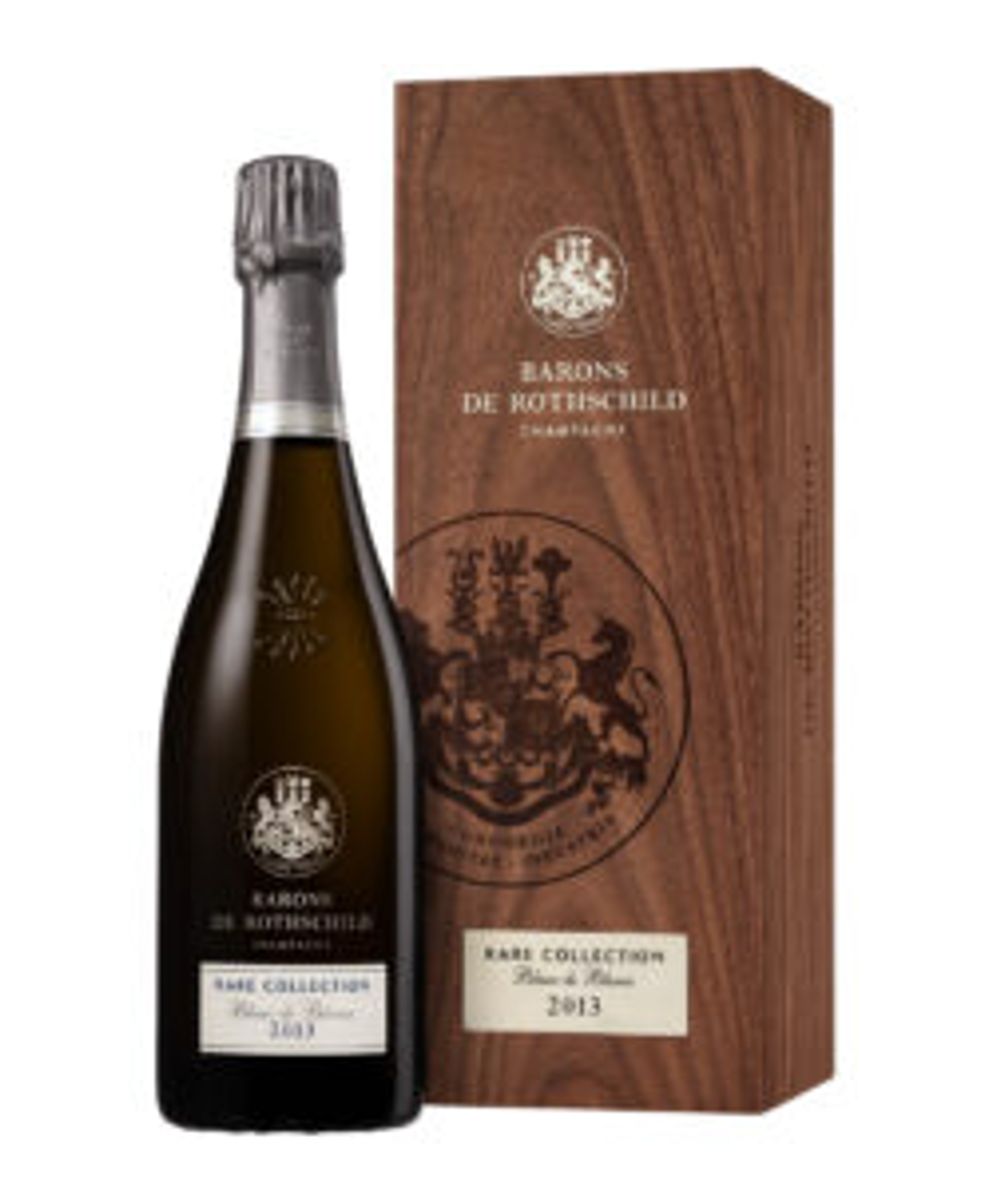
Barons de Rothschild currently produces approximately 600,000 bottles per year. The first wines were blended in 2005 and the first releases from Barons de Rothschild arrived on the market in 2009 with a focus on four countries: Japan, Germany, Switzerland, and Australia. Today the wines of Barons de Rothschild are available internationally.
The distributors of Champagne Barons de Rothschild are as follows: Waddesdon Wine Ltd (UK), MISA Imports (USA), ALD Global (Australia), Enoteca (Singapore), and ASC Fine Wines (China).
